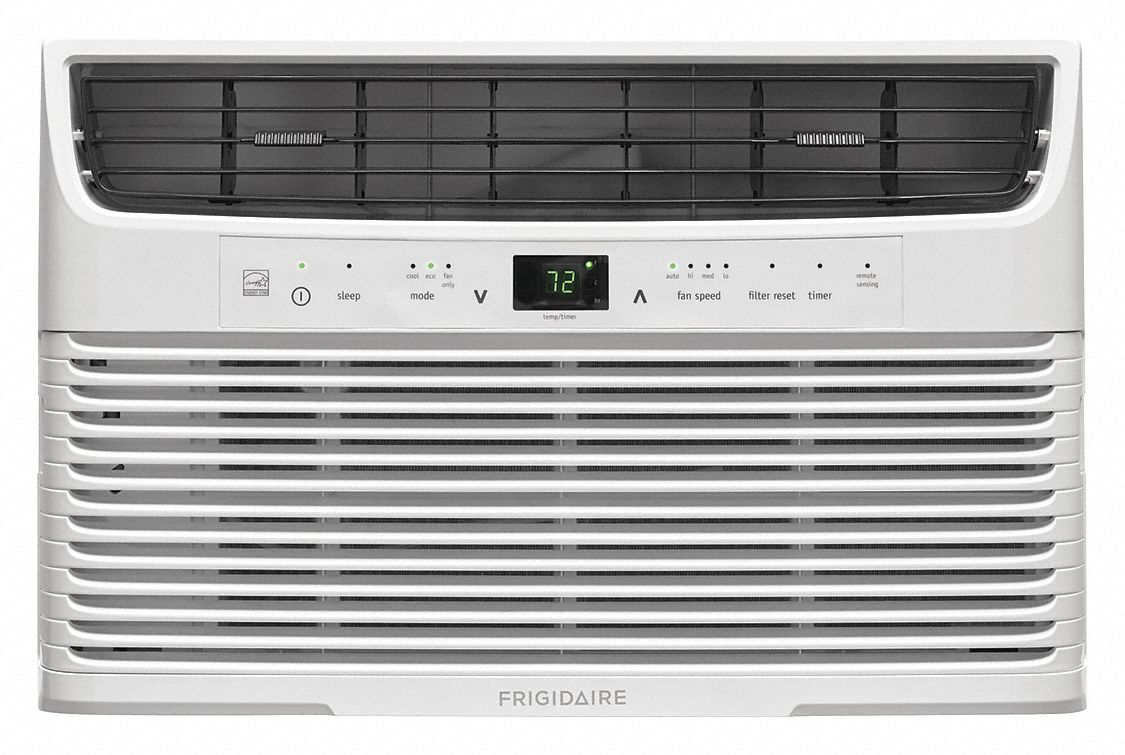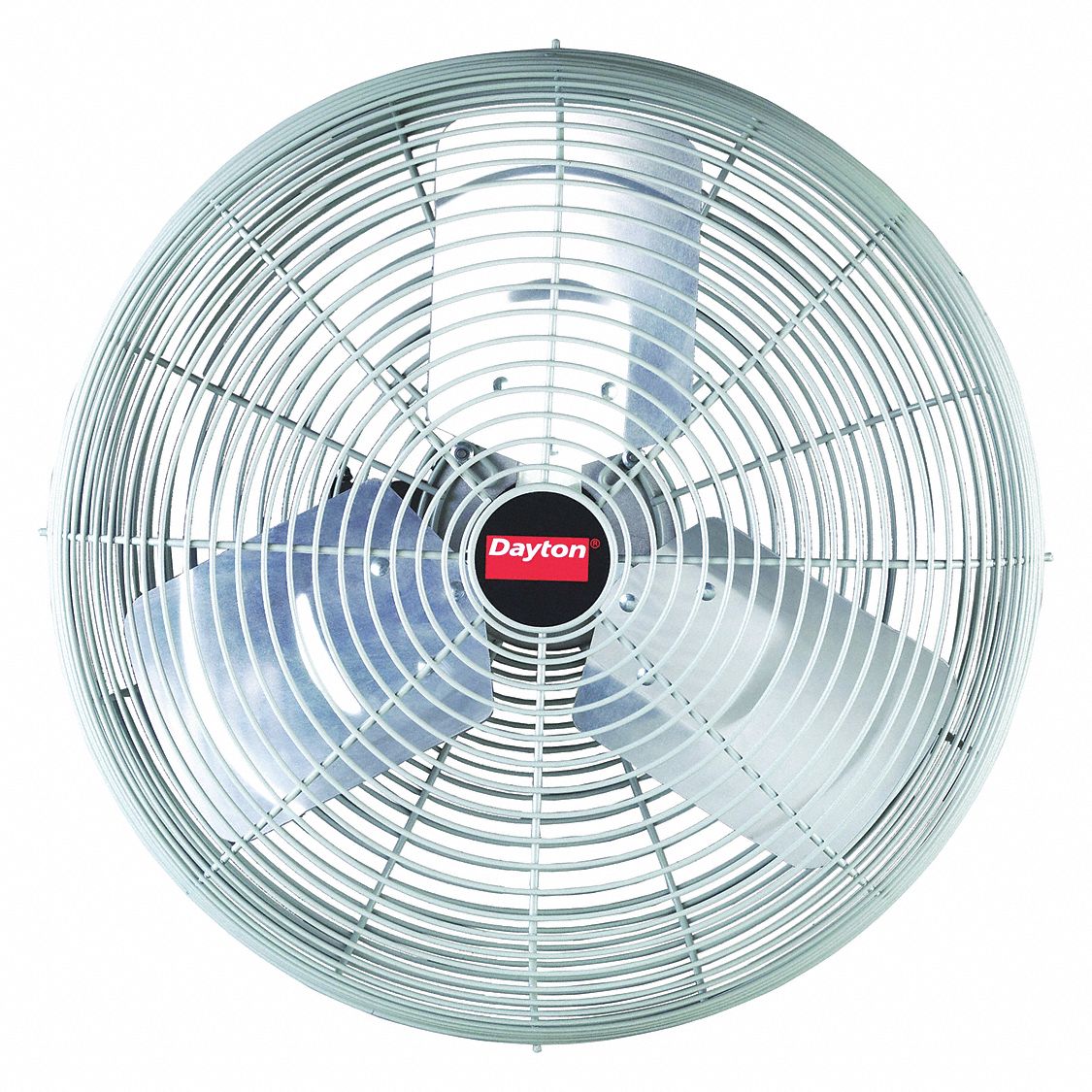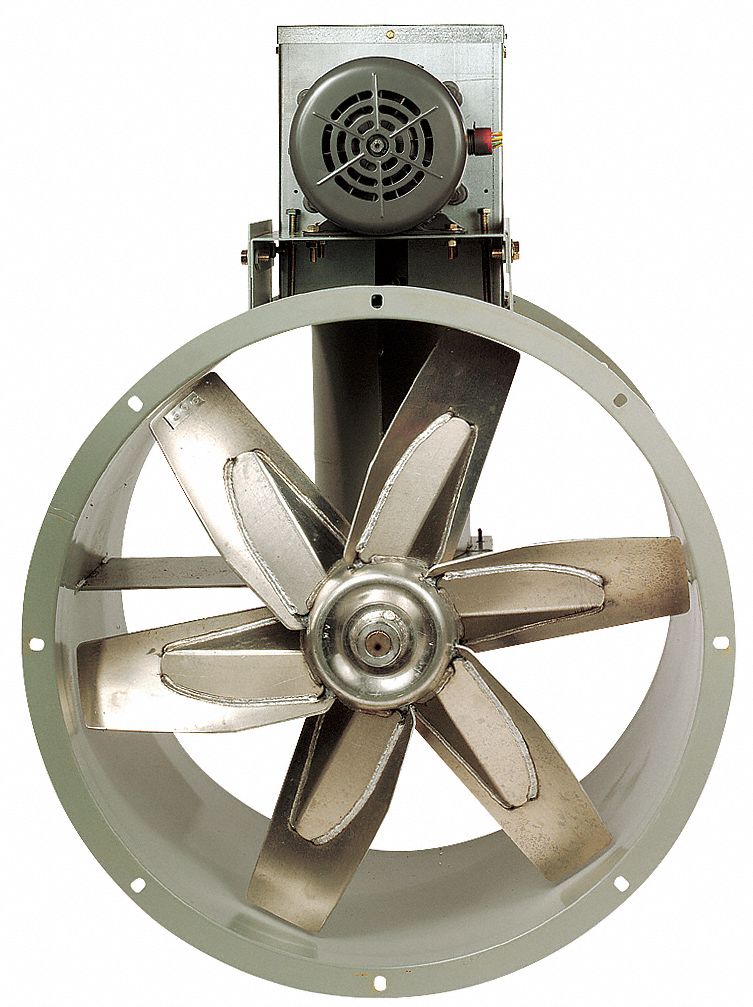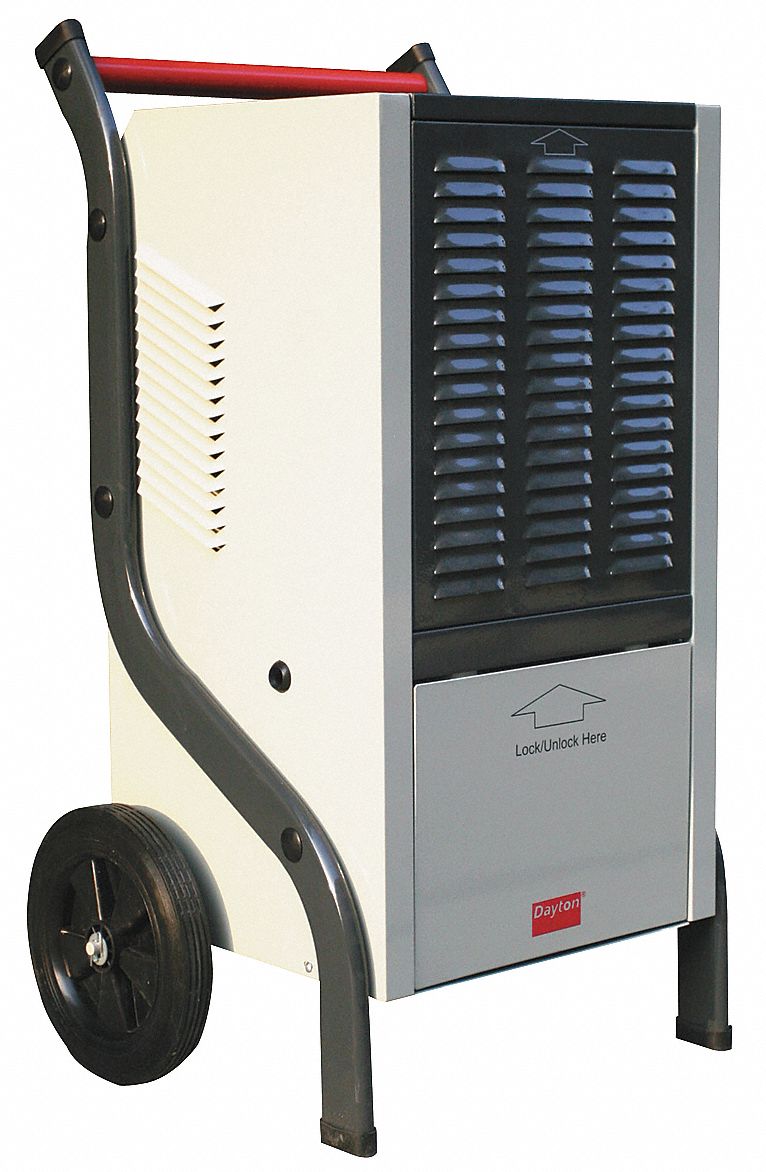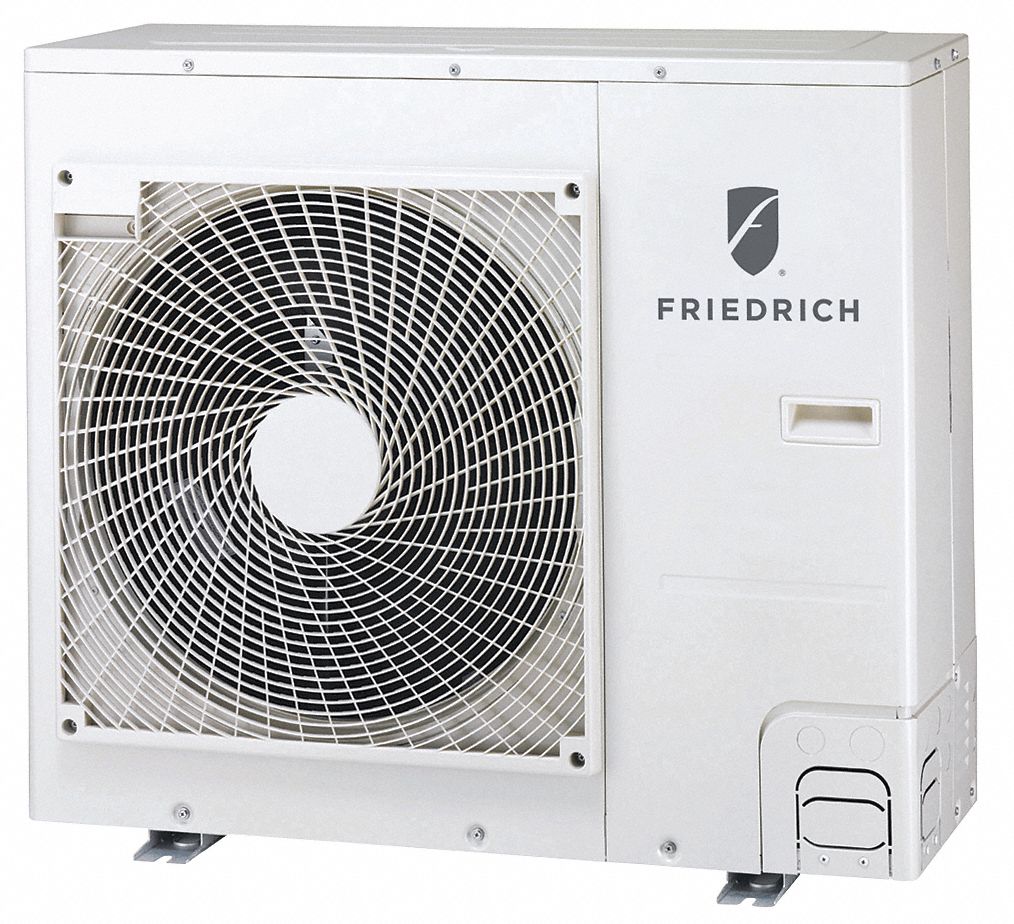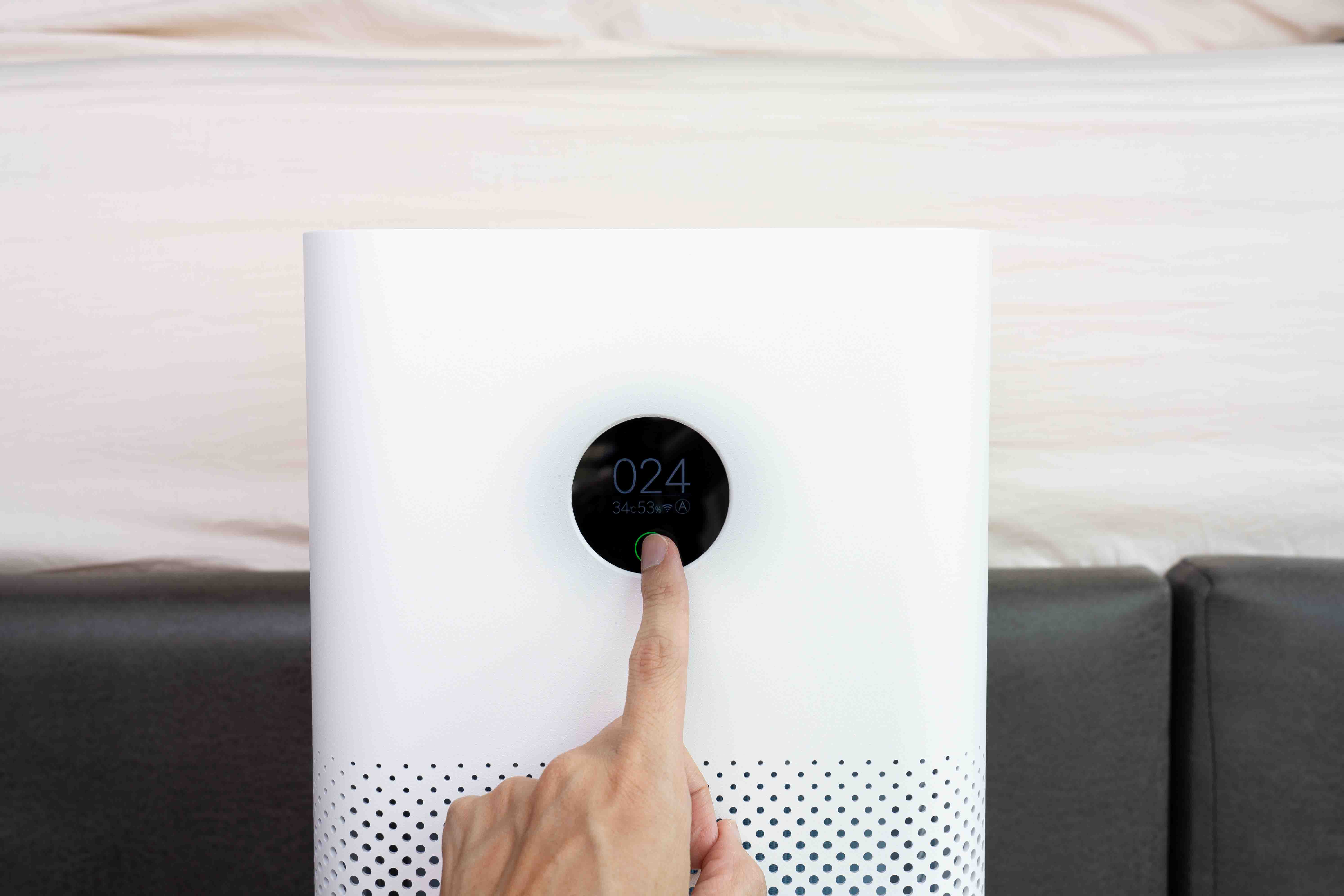

Portable Air Purifiers and Cleaners: What You Need to Know
By Grainger Editorial Staff 9/15/20


Portable air cleaners (also called portable air purifiers or air sanitizers) can be part of an effective strategy to improve indoor air quality (IAQ) in homes, offices, restaurants or other enclosed spaces.
To get the best results, it's helpful to understand clean air delivery rate (CADR), an industry-standard performance indicator for air purifiers. Using CADR ratings, you can compare the effectiveness of different models and determine which models have the right power for your room size. But before delving into the intricacies of CADR, it's important to look at the larger context and consider the role that air cleaners can play in an IAQ improvement strategy.
Indoor Air Quality Improvement Strategies
According to the EPA, there are three basic strategies to improve indoor air quality:
- Source Control
- Improved Ventilation
- Air Cleaners
Source control means getting rid of the sources of indoor air pollution, sealing them off, or controlling their emissions. According to the EPA, source control is the most effective solution for most home IAQ problems. In many cases, it's also the most inexpensive solution.
Examples of source control include:
- Modifying a gas stove to lower its emissions
- Enclosing asbestos
- Replacing or avoiding materials in construction and renovation projects that emit high levels of formaldehyde or volatile organic compounds (VOCs). For example, according to the EPA, engineered wood products such as particleboard and medium-density fiberboard (MDF) can sometimes contain urea-formaldehyde, which may off-gas formaldehyde for a long period of time.
Improved ventilation means diluting indoor air pollution by increasing the amount of outdoor air that comes inside.
In many commercial and multifamily residential buildings, sophisticated HVAC systems can control the amount of outdoor air admitted to the indoor environment. Standards developed by building technology trade group ASHRAE offer guidance on how to improve indoor air quality using these systems:
- ANSI/ASHRAE Standard 62.1-2019: Ventilation for Acceptable Indoor Air Quality
- ANSI/ASHRAE Standard 62.2-2019: Ventilation and Acceptable Indoor Air Quality in Residential Buildings
In older single family homes, most HVAC systems can't mechanically bring fresh air inside, according to the EPA. However, many local building codes now require fresh air intake. Heat recovery ventilators (HRV) and energy recovery ventilators (ERV) are mechanical systems used in many newer homes, designed to supply fresh air while exhausting stale air and minimizing energy costs.
According to the EPA, homeowners with older HVAC systems that can't mechanically bring fresh air inside can still increase ventilation by opening windows and doors, turning on window and attic fans, running bathroom and kitchen fans, or running window air conditioners with the vent control open.
The air filters on a furnace or central HVAC system can help clean the air throughout a building. Learn more about MERV ratings for HVAC filters.
Portable air purifiers and cleaners can help improve air quality in single rooms or areas.
Where Portable Air Cleaners Come In
Source control and ventilation are the most effective strategies to improve IAQ, but air filters and air cleaners can be an effectivesupplement according to the EPA.
Portable units can be particularly useful because their operation is not tied to the central HVAC system, which can only clean the air when the HVAC fan is on and actively circulating air through the building. Portable air cleaners and purifiers can clean the air independently of heating or cooling, and they can also provide filtration to spaces within buildings that are not served by central HVAC systems.
What Contaminants Do Portable Air Purifiers and Cleaners Remove from the Air?
The air we breathe can be polluted by gases and by particulate matter. Particulate matter is made up of small particles of a solid or liquid that are suspended in the air. Here are some examples of these two types of contaminants as described by the EPA:
| Particulate Matter | Gaseous Contaminants |
|---|---|
|
Airborne dust Fumes and smoke Viruses Bacteria Fungal spores Animal dander |
Carbon monoxide or nitrogen oxide from a combustion source Volatile organic compounds (VOCs) emitted by building materials or consumer products Semivolatile organic compounds such as fire retardants and pesticides Aldehydes such as formaldehyde |
Portable air purifiers and cleaners use different technologies to remove particulate matter and gaseous contaminants. In most buildings, particulate matter poses a greater health risk than gaseous pollutants, according to Berkeley Lab's Indoor Air Quality Scientific Findings Resource Bank, which states that particle removal should be the primary consideration. That said, gaseous pollutant removal can help eliminate objectionable odors according to Berkeley Lab.
Removing Particulate Matter
According to the EPA, there are two basic types of technology that portable air cleaners use to remove particulate matter from the air:
- Some portable air cleaners use fibrous media air filters to capture particles in the same way that MERV-rated filters capture particles in a central HVAC system. In these units, there is often a prefilter, which would have a lower MERV rating, and a HEPA or UPLA filter, which would have a much higher MERV rating. This is a simple technology, and according to Berkeley Lab it has the advantage that little can go wrong with it.
- Some portable air cleaners use electricity to make particles in the air adhere to plates or other surfaces. Cleaners in this category include electrostatic precipitators (ESPs) and ionizers. According to the EPA and Berkeley Lab, some of these devices may unintentionally produce ozone, which can be harmful.
Additionally, some portable air purifiers offer ultraviolet germicidal irradiation (UVGI), a technology that use ultraviolet (UV) light to damage microorganisms such as bacteria and viruses, making them non-infectious.
Removing Gaseous Pollutants
There are a number of technologies that are intended to eliminate harmful gasses from the air. According to the EPA, this is a more complex task and can involve technologies that include:
- Adsorbent media air filters such as activated carbon
- Chemisorbent media air filters
- Photocatalytic oxidation
- Plasma
- Intentional ozone generation
To remove gases including VOCs, the EPA recommends portable air cleaners with activated carbon filters or other filters designed to remove gases. Many portable air cleaners use a combination of filtration and other technologies to eliminate particulate matter as well as gasses.
Sizing a Portable Air Cleaner: Airflow Method
One way to size a portable air cleaner or purifier is to consider how long it will take a unit to turn over the air in a room by passing it through its filter or purification technology. You can calculate this using a unit's airflow rate, which is measured in cubic feet per minute (cfm). For example, if a unit with an airflow of 100 cfm is in a 20-foot by 20-foot room with 8-foot ceilings, it would take 32 minutes to turn over the air in the room.
If you're aiming for a set air exchange rate—in other words, you want to achieve a certain number of air changes per hour (ACH)—you can multiply the airflow by 60 and divide by the size of the room in cubic feet to determine the ACH that the unit will achieve in that room. But keep in mind that the percentage of contamination removed from this air in one change or turnover will depend on the efficiency of the unit's cleaning technology, and air may need to pass through the unit more than once to achieve an acceptable level of cleanness.
For example, if you compare two units that both have airflows of 100 cfm, but one unit uses a highly efficient HEPA filter while the other uses a much less efficient technology, the HEPA unit will remove contaminants from the air more quickly, even if though they're turning the air in the room at roughly the same rate, because the HEPA filter is removing a higher percentage of particles and smaller particles with each turn.
What Is CADR?
CADR, or clean air delivery rate, is a measure of a portable air purifier's delivery of treated air. Like airflow, CADR is expressed in cubic feet per minute (cfm)—but unlike airflow, CADR takes the efficiency of the cleaning technology into account. According to ASHRAE, you can think of CADR as being approximately the airflow of the unit multiplied by its cleaning efficiency. According to the EPA, this is the most helpful indicator for understanding and comparing units' effectiveness. Higher is better—a higher CADR means that a unit delivers a larger volume of relatively clean air per minute.
The Association of Home Appliance Manufacturers (AHAM) developed a standard test for CADR, which is recognized by ANSI. The test measures how a portable air cleaner performs with three different particle sizes that represent large, medium and small pollutants:
- Pollen, which represents large particulate matter (5 μm to 11 μm)
- Dust (0.5 μm to 3 μm), which represents medium-sized particulate matter
- Tobacco smoke, which represents small particulate matter (0.09 μm to 1 μm)
CADR is a measure of how well a unit removes particulate matter only—it does not measure the removal of gaseous pollutants.
According to ASHRAE, you can determine an air exchange rate by multiplying the CADR by 60 and dividing by the size of the room in cubic feet. This will give you the air changes per hour (ACH) of clean air. Or, you can use simple recommendations connecting room size to CADR from AHAM and the EPA.
How Does CADR Relate to Room Size?
In general, larger rooms and spaces require units with higher CADR ratings. To determine the CADR suitable for a given room size, AHAM recommends "the 2/3 Rule"—choosing a unit with a CADR for tobacco smoke that's equal to at least two-thirds of the square footage of the room. Meanwhile, the EPA offers these room size recommendations, which are similar:
| Room Area (sq. ft.) | Minimum CADR (cfm) |
|---|---|
|
100 |
65 |
|
200 |
130 |
|
300 |
195 |
|
400 |
260 |
|
500 |
325 |
|
600 |
390 |
These recommendations are calculated to provide at least an 80% reduction in steady-state particle concentrations.
Portable Air Cleaners and Ozone
Some air purifiers intentionally produce ozone, a gas that can help eliminate organic gasses that may pollute the air. But ozone itself can have harmful health effects. According to an EPA publication on ozone generators that are sold as air cleaners, the amount of ozone produced by these devices can be hard to control, potentially exposing people to levels of ozone above the recommended exposure limits, even when the devices are used according to manufacturers' instructions.
The EPA states that ozone has little ability to reduce indoor air contaminants at concentrations that are within public health standards. The EPA's advice is simple: do not use ozone generators in occupied spaces. Similarly, in ASHRAE's document on air cleaning, the organization takes the position that air purifiers that intentionally produce ozone should not be used in occupied spaces.
There are also air cleaners that produce ozone unintentionally, as a byproduct of their air cleaning technologies. ASHRAE advises caution with air cleaners that unintentionally emit a significant amount of ozone.
Other Factors to Consider
The Indoor Air Quality Scientific Findings Resource Bank suggests considering factors in addition to those discussed above:
- How noisy is the unit? If it's so noisy that you'll run it less frequently, it may not have the opportunity to clean the air effectively.
- How high are costs associated with running the unit (electricity and replacement filters)? According to the Indoor Air Quality Scientific Findings Resource Bank, there's a wide range of energy efficiency even for units with the same CADR, and more efficient units may use much less energy, leading to significant cost savings over time. Similarly, replacement filters may have different costs and lifespans.
Frequently Asked Questions
Q: What's the difference between MERV and CADR?
A: CADR is used for portable air cleaners and indicates the amount of relatively clean air that a portable air cleaner can deliver per minute. MERV rating is used for air filters and indicates how efficient the filter is—in other words, the percentage of contaminants it can remove as air passes through it. Unlike CADR, MERV rating does not indicate how much clean air the system can actually deliver, because this will depend on the HVAC system's airflow.
Q: Is CADR affected by fan setting?
A: Yes. An air purifier's CADR is related to its airflow, and the CADR labeled on its packaging is typically the highest that the unit can achieve, which would usually require the highest airflow or fan setting.
Q: Can air purifiers reduce the concentration of viruses such as SARS-CoV-2, the virus that causes COVID-19?
A: Portable air purifiers and cleaners can help reduce airborne contaminants including viruses, according to EPA guidance on air cleaners and COVID-19. However, the agency cautions that air filtration is not enough to protect people from COVID-19 and that when air cleaners are used they should be part of a plan incorporating other virus-prevention best practices recommended by the CDC and other groups. The highest concentrations of SARS-CoV-2 aerosols are within the size range that air cleaners with HEPA filters can effectively remove, according to a study published in Building and Environment. Portable air cleaners with HEPA or high-MERV filters are suggested by building technology group ASHRAE as an emergency pandemic response strategy that may also include high-MERV-rating filters in central HVAC systems. Learn more about HVAC strategies to fight airborne illness.
Q: Can portable air cleaners help with allergy symptoms?
A: The EPA says that portable air cleaners can "possibly" reduce symptoms. Portable air cleaners are generally good at trapping coarse particles including dust, pollen, animal dander and other allergens, but these particles are large enough to settle out of the air quickly, which means that air filters in portable air cleaners or central HVAC systems are unlikely to remove them effectively from the environment, according to the EPA. There are, however, some allergens from cats, dogs and dust mites that are carried on small particles and are more likely to be removed by air filters, and some studies have found that portable air cleaner use is correlated with reduced allergy and asthma symptoms. For more information see the Indoor Air Quality Scientific Findings Resource Bank page, "Particle Air Cleaning and Allergies and Asthma."
Q: What Is ozone?
A: Ozone is O3, a gas whose molecules contain three oxygen atoms. In the upper atmosphere, ozone helps shield the earth from harmful ultraviolet rays, but at ground level, ozone is the main ingredient in smog and can have harmful health effects. Ozone generators are sometimes used in an attempt to improve indoor air quality, but the EPA and building technology group ASHRAE both recommend that ozone generators not be used in occupied spaces.
Q: What materials and products can give off volatile organic compounds (VOCs)?
A: VOCs may be emitted by many products, according to the EPA, including:
![]()
The information contained in this article is intended for general information purposes only and is based on information available as of the initial date of publication. No representation is made that the information or references are complete or remain current. This article is not a substitute for review of current applicable government regulations, industry standards, or other standards specific to your business and/or activities and should not be construed as legal advice or opinion. Readers with specific questions should refer to the applicable standards or consult with an attorney.

